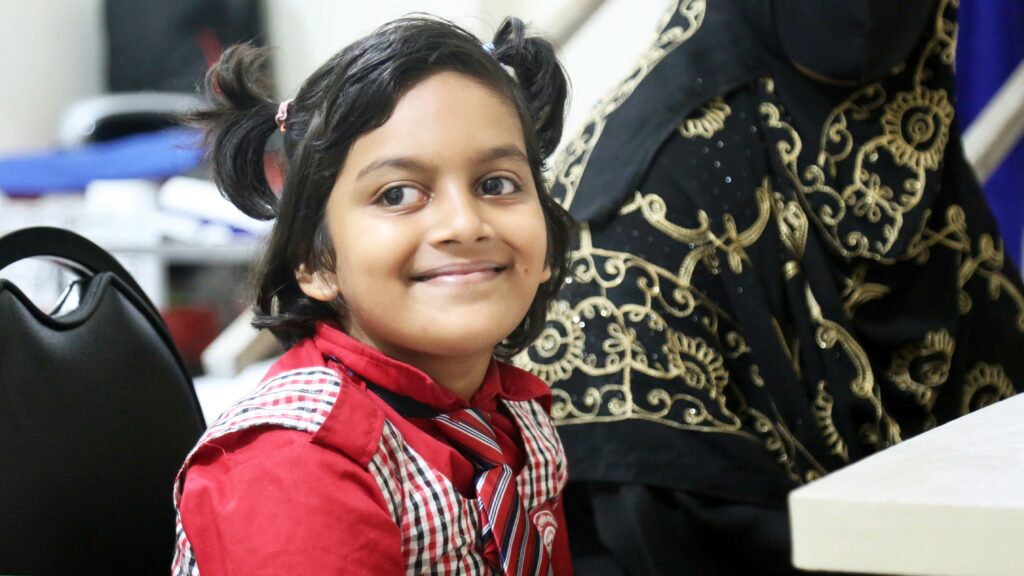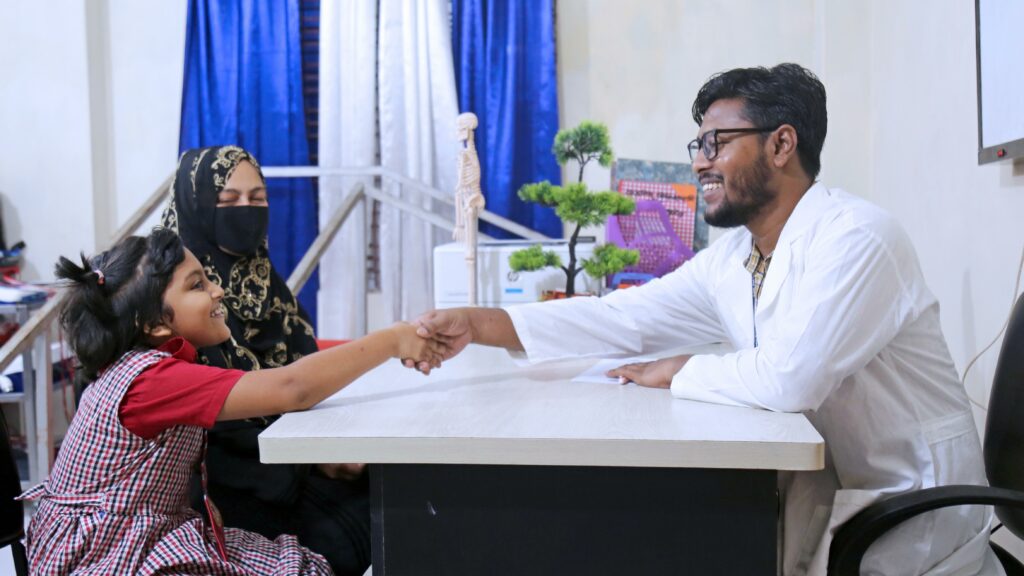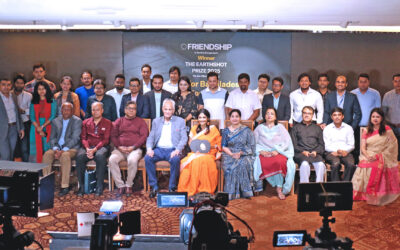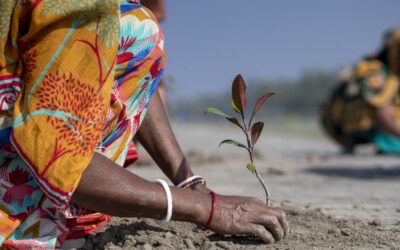Thousands of children are born with clubfoot in Bangladesh, but corrective surgery and therapy can eradicate the stigma

by Abu Bakar Bin Alam
13 July 2025
The phrase “to stand on their own feet” appears in many cultures across the world in as many languages and variations as the quintessential perspective on self-reliance.
And yet there are many unfortunate people who, by apathetic twists of fate or statistical probabilities, are deprived of the opportunity.
Fatema Tuz Zohra, a nine-year-old child from Gaibandha, had suffered from clubfoot in her right leg since her birth and could not walk properly. Jhumur, her mother, pursued treatment at several hospitals in Bangladesh and India to no avail. As Fatema grew, the condition persisted and prevented her from embracing her full potential. She constantly required assistance to walk, entrenching her dependence on others for mobility.
“My daughter is growing up, and I couldn’t carry her everywhere all the time. I love her, and I couldn’t bear the sight of her struggling to take a single step.”
Word of mouth reached Jhumur of a hospital ship that conducted critical surgeries that could address conditions like clubfoot. But the idea of a ship dispensing advanced healthcare seemed far-fetched to the jaded mother.
But in January 2025, Jhumur heard the Friendship Floating Hospital EFH had docked in Gaibandha and announced that it was providing a wide range of surgeries, so she decided to see if there was anything they could do for Fatema.
What happened next was beyond their expectations.

The Friendship doctor examining her promptly determined that a tenotomy – a surgical procedure where her Achilles tendon would be cut lengthwise and re-attached to extend it – would immediately put the clubfoot in Fatema’s past. The doctor, along with other medical staff onboard the ship, addressed the condition with an air of veteran assurance, telling her parents that the surgery and subsequent therapy would be unremarkably routine and they had nothing to worry about anymore.
The surgery on her went successfully, and Fatema could stand on her own two feet for the first time in her life. While she can stand, she has yet to walk unassisted as nine years of muscle memory and habit linger. She can walk with her mother’s help, but the staff at the Friendship Disability Centre in Gaibandha are providing therapy regularly to ensure she can walk by herself very soon.
The therapy includes various assistive devices in a friendly, comfortable, welcoming environment that allows children like Fatema to be rehabilitated with combined support from their families and Friendship staff.
Jhumur can hardly stop smiling as she gushes over Fatema’s improvement over the past six weeks of therapy. She says she has been to many therapists, but none have shown the level of genuine care and empathy that the Friendship Disability Centre has. She is eager to see her daughter walk on her own two feet, and Fatema is well on her way to realising that dream.
The therapists at the Friendship Disability Centre say that the initial discomfort after the surgery is common, especially considering how long Fatema has been used to her condition. But finding confidence in their past successes, they say, watching Fatema run around is a matter of months away.
According to a handbook on clubfoot by the Ministry of Health and Family Welfare, an estimated 4,000 children are born with clubfoot in Bangladesh each year. But surgery and subsequent therapy can help the children live with dignity.



